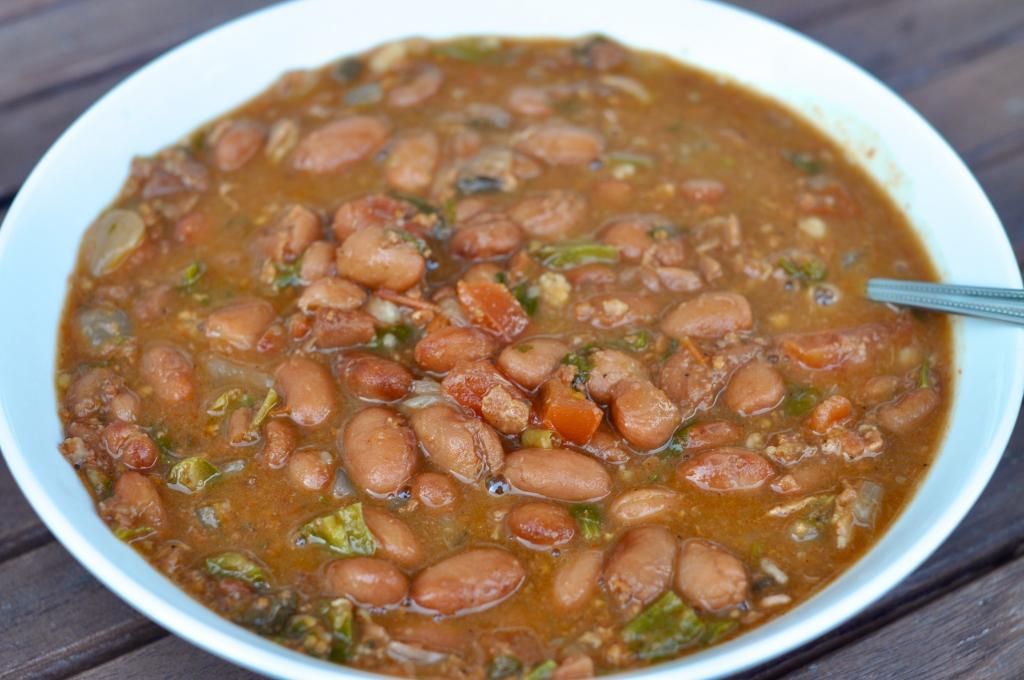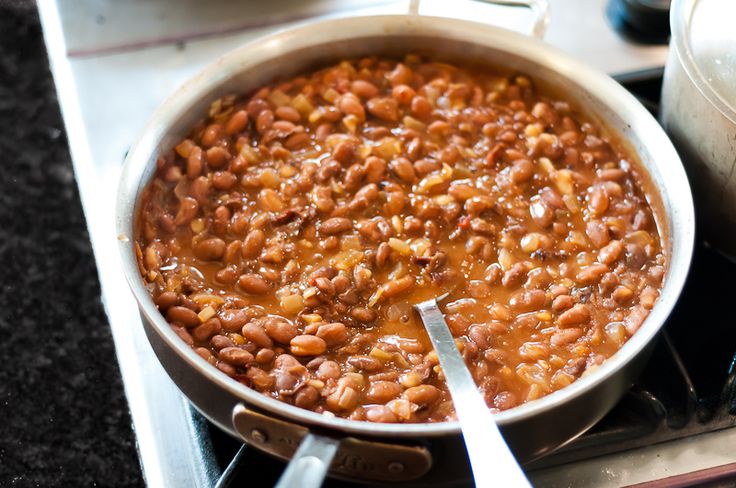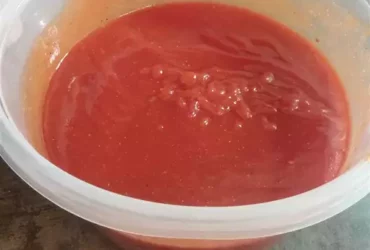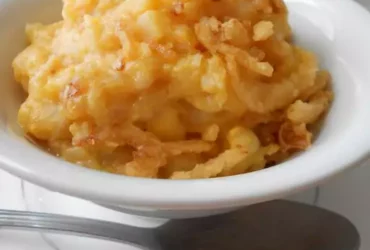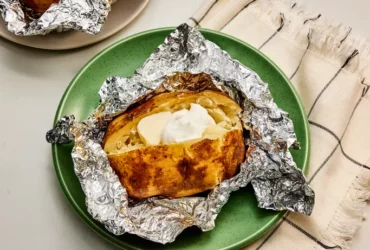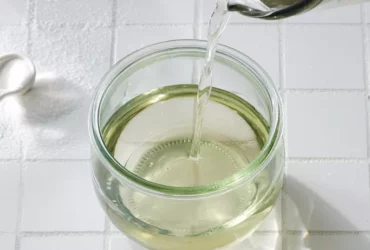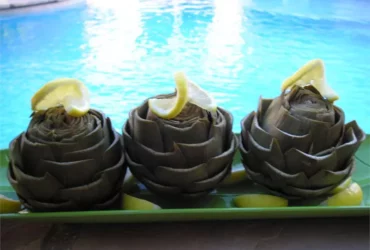Ingredients
Cooking Frijoles
The primary ingredients for cooking frijoles are as follows:
- Bahamian-style frijoles, also known as kidney beans, lima beans, black beans, or pinto beans.
- Onion
- Garlic
- Roman or regular creole seasoning
- Salt and pepper
- Cumin, oregano, thyme, and paprika (optional)
The following cooking techniques can be employed to prepare frijoles:
- Soak the beans overnight in water.
- Rinse the soaked beans with clean water, discarding any debris.
- In a large pot, heat some oil and sauté diced onion and minced garlic until they are softened.
- Add the rinsed beans to the pot, along with some creole seasoning and salt, pepper, cumin, oregano, thyme, and paprika (if using).
- Pour water over the ingredients in the pot until they are fully submerged.
- Bring the mixture to a boil, then reduce the heat and let it simmer for about two hours, or until the beans are tender and have absorbed most of the liquid.
Note that some people may prefer their frijoles in a variety of flavors. Some possible variations include:
- Adding diced ham or bacon to the pot for added smokiness.
- Mixing in some chopped fresh herbs, such as parsley or cilantro.
- Using a splash of vinegar or lemon juice to brighten up the flavors.
Ultimately, the key to making great frijoles is to experiment with different combinations of ingredients and techniques until you find what works best for your taste buds.
1 cup dried black beans, soaked overnight
The key to making delicious and authentic frijoles is starting with high-quality ingredients. When it comes to the beans, you’ll want to use dried black beans that have been soaked overnight in water.
Here are some essential ingredients for this recipe:
- 1 cup dried black beans: Look for high-quality beans that have been properly stored and have a good texture. You can find them at most Latin American markets or online.
- Water: For soaking the beans, you’ll need about 4-6 cups of water. You can also use a broth or stock if you prefer a richer flavor.
- 1 onion, chopped: A medium-sized onion is perfect for adding a sweet and savory flavor to your frijoles.
- 2 cloves garlic, minced: Mince the garlic before sautéing it in oil to bring out its full flavor.
- 1 tablespoon olive oil: Use a good quality olive oil for cooking and adding flavor to your frijoles.
- 1 teaspoon cumin: Ground cumin is essential for giving your frijoles their authentic flavor. You can also add a pinch of cayenne pepper if you like a bit of heat.
- Salt and pepper, to taste: Add these seasonings as needed to bring out the flavors in your frijoles.
Additional ingredients that you can use to enhance the flavor of your frijoles include:
- Bacon or pancetta, diced: Adding a bit of smoky flavor can elevate your frijoles to new heights.
- Tomatoes, chopped: Fresh or canned tomatoes add a burst of juicy flavor to your frijoles.
- Cilantro, chopped: Add some fresh cilantro towards the end of cooking for an extra burst of freshness.
Remember to always use the freshest ingredients and adjust the seasonings to your liking. Experiment with different combinations to find your favorite version of frijoles!
1 onion, chopped
The first ingredient needed for our Frijoles recipe is an onion, which plays a crucial role in adding depth and flavor to the dish. To prepare the onion, it should be chopped into small pieces.
The process of chopping an onion involves peeling the skin off the onion and placing it on its side. Next, cut the onion in half lengthwise, starting from the root end and cutting through the top, but not all the way to the bottom. This will help to prevent the onion from falling apart.
Place one of the cut sides down on a stable surface, such as a cutting board, and chop it into small pieces. Continue this process with the other half, creating uniform-sized pieces that are easy to sauté or cook.
When chopping an onion, it’s essential to use the correct technique to avoid creating tears or irritating eyes and skin. To prevent this, peel the onion under cold running water while keeping your face away from the direction of the cut or place a piece of bread in your mouth to absorb any released irritants.
By chopping the onion into small pieces, you’ll be able to sauté it until translucent before adding the other ingredients to the Frijoles recipe. This process will help to develop a rich flavor and aroma that complements the other components of the dish.
2 cloves garlic, minced
To prepare a flavorful Frijoles recipe, you’ll need to start by selecting high-quality ingredients that will bring out the best flavors. One essential ingredient for many Latin American dishes, including this recipe, is garlic.
For this Frijoles recipe, you’ll require two cloves of garlic. Garlic plays a crucial role in adding depth and richness to various types of cooking, including bean recipes like frijoles. Its pungent flavor enhances the taste of other ingredients without overpowering them, creating a well-balanced dish.
To use minced garlic effectively, it’s essential to first mince or finely chop the two cloves required for the recipe. This helps distribute its flavorful compounds throughout the dish as it cooks. To mince garlic, you can use either a knife, a press, or an electric chopper, depending on your preference and convenience.
Once minced, the garlic should be added to the pot containing the Frijoles ingredients at some point during cooking. The exact timing will depend on personal taste and the recipe’s specifications. Some people prefer their garlic sautéed in a bit of oil before adding other ingredients, while others like it mixed directly with the beans and seasonings.
The use of minced garlic in this recipe allows its flavor to meld harmoniously with that of the other ingredients, including the beans themselves. This blending of flavors results in a more complex taste experience for those who enjoy traditional Frijoles dishes.
1 red bell pepper, diced
The Frijoles recipe calls for a variety of ingredients to create this delicious and flavorful dish.
One of the key ingredients is the red bell pepper, which adds a sweet and crunchy texture to the dish.
Red Bell Pepper: A Crucial Ingredient in Frijoles
The recipe requires 1 red bell pepper, diced into small pieces.
To dice the red bell pepper, you will need to:
- Carefully cut off both ends of the red bell pepper using a sharp knife.
- Stand the red bell pepper on its side and cut along one edge to remove the seeds and white membrane.
- Cut the red bell pepper into 1-inch squares, making sure they are uniform in size for even cooking.
The diced red bell pepper is an essential component of Frijoles, adding flavor, texture, and visual appeal to this traditional dish.
1 can diced tomatoes
The ingredients for the Frijoles recipe include one can of diced tomatoes. Diced tomatoes are a staple ingredient in many Latin American dishes, including this traditional Mexican bean stew.
Diced tomatoes are made from fresh tomatoes that have been washed, cored, and chopped into small pieces, usually about 1/2 inch in size. The canning process involves packing the diced tomatoes into airtight containers, often with added salt and sometimes other seasonings or preservatives, to create a shelf-stable product.
The use of canned diced tomatoes is convenient for several reasons. Firstly, they are readily available in most supermarkets, eliminating the need to purchase fresh tomatoes and then chop them yourself. Secondly, canned diced tomatoes have a long shelf life, allowing you to stock up on them without worrying about spoilage.
For this Frijoles recipe, one can of diced tomatoes will add a burst of tangy flavor to the pot, complementing the rich flavors of the beans and other ingredients. When selecting diced tomatoes for your Frijoles, look for brands that are labeled as “san marzano” or “fire-roasted,” as these may offer deeper, more complex flavor profiles.
Before using canned diced tomatoes in your Frijoles recipe, be sure to rinse them under cold running water to remove excess sodium. You can also drain the liquid and pat dry with a paper towel for added texture and flavor contrast.
Incorporating diced tomatoes into the Frijoles recipe is an easy way to elevate this classic dish. With their concentrated tomato flavor, they add depth and complexity to the pot without adding much extra fat or calories.
1 tablespoon cumin
The ingredients required for this delicious Frijoles recipe are as follows:
Main Ingredients
- Cumin: This is a key spice in Mexican and South American cuisine, adding warmth and depth to the dish. For our Frijoles recipe, we will be using 1 tablespoon of cumin powder.
In terms of the characteristics of cumin, it has a rich, earthy flavor with notes of nuttiness and a slightly bitter taste. Cumin is commonly used in combination with other spices to add depth and warmth to dishes. In this recipe, we are using ground cumin powder, which is the most commonly available form.
The type of cumin used can vary depending on the region and personal preference. Some common types include:
- White Cumin: This has a milder flavor than black cumin and is often used in Indian and Middle Eastern cuisine.
- Black Cumin: This has a stronger, more bitter flavor than white cumin and is commonly used in Mexican and South American cuisine.
The use of cumin in cooking can be traced back thousands of years to ancient civilizations in the Middle East, North Africa, and Asia. It was highly valued for its medicinal properties, as well as its culinary uses. Today, cumin is a staple spice in many cuisines around the world.
Other Ingredients
- Frijoles (Beans): We will be using dried red kidney beans for this recipe, which can be found in most supermarkets.
- Garlic: Minced garlic adds a pungent flavor to the dish and is used in combination with cumin to create a rich, savory taste.
- Olive Oil: This is used to sauté the onions and garlic at the beginning of the recipe.
These ingredients will be combined in specific quantities and cooked using a traditional method to create this hearty and flavorful Frijoles dish. The result will be a rich, comforting meal that is perfect for any occasion.
1 teaspoon paprika
Paprika is a spice made from ground dried fruits of the sweet or bell pepper plant, Capsicum annuum. It is a key ingredient in many cuisines around the world, particularly in Hungarian and Spanish cooking.
The type of paprika used in the Frijoles Recipe is typically referred to as smoked or sweet paprika. Smoked paprika has been smoked over oak wood fires to give it a rich, earthy flavor and aroma.
Smoked paprika adds depth and warmth to dishes, making it an excellent choice for stews, braises, and slow-cooked meals like frijoles. It pairs well with ingredients like garlic, onions, cumin, and coriander.
In the context of Frijoles Recipe, the 1 teaspoon of paprika serves several purposes: it adds flavor to the beans themselves, enhances the overall depth of the dish, and complements the other spices and ingredients used in the recipe.
Paprika contains a number of beneficial compounds, including antioxidants, vitamins, and minerals. It is also high in fiber and has been linked to various potential health benefits when consumed as part of a balanced diet.
Salt and pepper, to taste
The Frijoles Recipe calls for a specific amount of salt and pepper to enhance the flavor of the dish, but the instructions state “to taste.” This means that the cook has complete control over how much salt and pepper they want to add.
When it comes to salt and pepper, these two ingredients are staples in most kitchens. They can be found on every dining table, and their purpose is to bring out the natural flavors of food without adding a strong flavor themselves.
Salt enhances flavors by suppressing the sweetness or bitterness that other ingredients may add. It also helps preserve food by drawing moisture from it, creating an environment that’s less conducive to bacterial growth. On the other hand, pepper has a unique flavor all its own and is commonly used in combination with salt for added depth.
When using “to taste” as a guideline, cooks have two options: either they can add small amounts of salt and pepper until it tastes right or they can make an educated estimate of how much to use based on the ingredients’ properties. If they are working within the Frijoles Recipe, they will know how much of other ingredients there is and this will help them gauge the optimal amount of salt and pepper.
Keep in mind that people have different taste preferences when it comes to salt and pepper. Some may prefer a dish that’s lightly seasoned with just a pinch of each, while others may want more robust flavors with generous amounts added.
When adding salt and pepper “to taste,” it can be helpful for cooks to start with small amounts of both ingredients and then add more until they reach the desired level of flavor. This will also help prevent over-salting or overpowering the dish, especially since some ingredients may be more sensitive than others.
For example, if a dish has ingredients that are naturally high in salt content (such as meats, cheeses, or pickled vegetables), less salt may need to be added. On the other hand, sweet and mild foods like fruits and grains may require more pepper for balance.
In any case, when using “to taste” as a guideline, it’s essential to trust one’s instincts and not be afraid to experiment with different combinations of salt and pepper until you find what works best for your specific recipe. For the Frijoles Recipe, cooks should focus on adding enough salt and pepper to bring out the natural flavors without overpowering them.
Preparation
Cooking the Frijoles
To begin with, preparation is crucial in making delicious Frijoles. Start by rinsing 1 cup of dried black beans under cold running water to remove any debris or impurities.
Next, drain the beans and place them in a large bowl. Cover the beans with 6 cups of water and let it soak for at least 8 hours or overnight. This step is essential as it rehydrates the beans and helps to reduce cooking time.
After soaking, drain the water from the bowl and transfer the soaked black beans to a large pot or Dutch oven. Add in 1 onion that has been chopped into small pieces, along with 2 cloves of minced garlic.
Heat oil in a pan over medium heat and sauté the onion until it is translucent. This will add flavor to the Frijoles. Then, add the minced garlic and cook for an additional minute, taking care not to burn it.
Add the soaked black beans along with 1 teaspoon of ground cumin, 1/2 teaspoon of ground coriander, salt, and pepper to the pot. Stir well to combine all the ingredients.
Now, add in 6 cups of water and bring the mixture to a boil. Once boiling, reduce the heat to low and let it simmer for about an hour or until the beans are tender.
About 30 minutes before serving, add in chopped fresh cilantro and cook for another 20-25 minutes, or until the Frijoles have reached the desired consistency.
Drain and rinse the soaked beans, then place them in a large pot with 4 cups of water
To prepare the frijoles recipe, it’s essential to start by soaking and preparing the beans for cooking.
The first step in the preparation process is to soak the dried beans overnight in water. This will help to rehydrate the beans and make them easier to cook. The ratio of water to beans can vary depending on personal preference, but a general rule of thumb is to use 1 part beans to 4 parts water.
Once the beans have soaked for several hours or overnight, they are ready to be drained and rinsed. To drain and rinse the beans, pour off the soaking liquid and transfer the beans to a fine-mesh strainer or colander. Rinse the beans with cold running water to remove any remaining impurities or residue from the soaking process.
After draining and rinsing the soaked beans, they are ready to be placed in a large pot for cooking. To cook the frijoles recipe, you will need 4 cups of water per cup of dried beans. Therefore, if you are using 1 cup of dried beans, you will need to place them in a large pot with 4 cups of water.
Here is a list of equipment and ingredients needed for the preparation process:
- Large pot (at least 6-quart capacity)
- Dried frijoles beans
- Water
- Fine-mesh strainer or colander
- Cool running water
The preparation process is now complete, and the beans are ready to be cooked according to your desired recipe. This may involve boiling the frijoles for several hours or using a pressure cooker to speed up the cooking time.
Bring the mixture to a boil, then reduce heat and simmer for 1 hour or until the beans are tender
To begin with, preparation is key to ensuring that the frijoles turn out perfectly cooked and flavorful. This involves a few essential steps that must be carried out with attention to detail.
The first step in preparing the frijoles is to sort through the dried beans and remove any debris or stones that may have accumulated during storage. It’s also a good idea to rinse the beans under cold running water to wash away any impurities.
Next, it’s time to soak the beans in water overnight or for at least 8 hours. This will help to rehydrate the beans and make them easier to cook. You can soak the beans in a large container or pot with enough water to cover the beans by about an inch.
Once the soaking process is complete, drain and rinse the beans again under cold running water to remove any excess water that may have accumulated during soaking.
Now it’s time to combine the soaked and rinsed beans with all of the remaining ingredients, including any aromatics such as onions, garlic, or herbs. You can use a large pot or Dutch oven for this step, making sure to add enough liquid to cover the beans by at least an inch.
Bring the mixture to a boil over high heat, then reduce the heat to a simmer and cook for 1 hour or until the beans are tender. Be sure to check on the beans periodically to ensure that they’re not getting too much water or becoming too mushy.
As the frijoles simmer, you can attend to any other aspects of the dish, such as seasoning with salt, pepper, and any additional spices or herbs that you like. You may also want to mash some of the beans against the side of the pot to create a creamy texture.
After 1 hour, check on the frijoles again to see if they’re cooked through. If they still seem slightly firm or resistant to biting, continue cooking for an additional 30 minutes and then check again. Repeat this process until the beans are tender and easily mashed with a fork.
Finally, once the frijoles have reached the desired level of doneness, turn off the heat and let them rest for about 10-15 minutes to allow any excess moisture to evaporate. You can then serve the frijoles hot, garnished with chopped fresh herbs or a dollop of sour cream if desired.
Add the chopped onion, minced garlic, diced red bell pepper, and cumin to the pot and continue to simmer for another 30 minutes
To further enhance the flavor of the Frijoles, it’s essential to prepare the ingredients properly before adding them to the pot.
Start by finely chopping an onion and sautéing it in a pan until translucent. This step is crucial as it breaks down the cellular structure of the onion, releasing its natural sweetness and aroma that will infuse the Frijoles with flavor.
Next, add minced garlic to the pot, taking care not to burn it. Garlic has a high sulfur content that can quickly become overpowering if cooked for too long. A delicate balance must be struck between releasing its flavors and preventing it from becoming bitter.
Following the onion and garlic, add diced red bell pepper, which will add a sweet and crunchy texture to the Frijoles. The vibrant color of the bell pepper is also a sign that it’s ripe and ready for use in cooking.
Finally, sprinkle some cumin over the top of the mixture. Cumin has an earthy, warm flavor that complements the natural sweetness of the onion and garlic perfectly, while its aroma enhances the overall taste experience of the Frijoles.
After adding all these ingredients to the pot, continue to simmer for another 30 minutes to allow them to meld together in harmony. This patient approach is key to developing a rich and complex flavor profile that will make your Frijoles stand out from the crowd.
Traditional Cooking Methods
Using a Pressure Cooker
Cooking frijoles, also known as beans, is an art form that requires patience and the right techniques to bring out their full flavor and nutritional value. One traditional method of cooking frijoles is using a pressure cooker.
Traditional Cooking Methods
In the past, people would simmer frijoles for hours on low heat to make them tender and soft. This process was time-consuming and required constant monitoring to prevent scorching or burning.
Another traditional method involved soaking frijoles overnight in water to rehydrate them before cooking. This helped reduce cooking time and made the beans easier to digest.
Using a Pressure Cooker
A pressure cooker is an ideal kitchen appliance for cooking frijoles quickly and efficiently. Here are some benefits of using a pressure cooker:
- Reduced Cooking Time: Frijoles cook much faster in a pressure cooker, typically in 30-40 minutes, depending on the type of beans.
- Improved Nutrition: Pressure cooking helps retain nutrients and minerals found in frijoles, making them a healthier option for meals.
- Easier Digestion: Pressure-cooked frijoles are easier to digest due to their reduced phytate content, which can cause gas and bloating in some individuals.
- Convenient: Simply add frijoles, water, and any desired spices or flavorings to the pressure cooker, close the lid, and let it do its magic!
Tips for Cooking Frijoles with a Pressure Cooker
Here are some additional tips to keep in mind when cooking frijoles with a pressure cooker:
- Choose the Right Type of Frijoles: Different types of frijoles require varying cooking times. Choose a type that suits your needs and follow package instructions for specific cooking guidelines.
- Add Aromatics: Onions, garlic, and spices add flavor to frijoles and enhance their overall taste experience. Saute them in the pressure cooker before adding the beans for added depth of flavor.
- Don’t Overfill the Pressure Cooker: Leave enough space between the frijoles and the lid to allow steam to build up and help cook the beans more efficiently.
By following these traditional methods and using a pressure cooker, you can enjoy delicious, nutritious frijoles that are perfect for any meal or occasion!
According to the USDA, pressure cookers can reduce cooking time by up to 70%
The traditional methods of cooking frijoles, which are a staple food in many Latin American countries, often involve soaking and simmering dried beans for several hours to achieve tender results.
One of the most common techniques used to cook frijoles is the low-heat simmer method. This involves placing the soaked and rinsed frijoles in a pot or Dutch oven with enough water to cover them. The mixture is then brought to a gentle boil, after which it’s reduced to a low heat setting, allowing for a gradual and even cooking process.
The bean-to-water ratio is crucial when using this method, as it will affect the texture of the final product. A general rule of thumb is to use 1 part frijoles to 4 parts water. Adjusting this ratio can help achieve desired textures, such as a creamy consistency or a heartier, more rustic result.
Another traditional cooking method is pressure cooking, which can significantly reduce cooking time while preserving the nutrients and flavor of the frijoles. According to the USDA, pressure cookers can reduce cooking time by up to 70%, making it an ideal option for busy home cooks or those who want to prepare a hearty meal in less than an hour.
When using a pressure cooker, be sure to follow the manufacturer’s guidelines and use caution when handling hot equipment. Typically, pressure cookers require about 30-45 minutes of cooking time for frijoles, after which they can be left to simmer or used as an instant pot.
The slow cooker method is also a great option, especially during the colder months when warmth is desired in the kitchen. Simply add all the ingredients to the crockpot and let it do its magic for 6-8 hours on low heat. This hands-off approach allows you to cook frijoles while engaging in other activities or running errands.
Lastly, some people prefer using a stovetop instant pot, which combines the functions of a pressure cooker and instant pot. These multi-cookers are highly versatile and can help achieve a wide range of textures and flavors with minimal effort.
Simply add all the ingredients to the pressure cooker and cook for 2025 minutes
To prepare traditional frijoles using a pressure cooker, follow these steps carefully.
The first step involves sorting and washing one pound of dried pinto beans to remove any debris or stones. Rinse them thoroughly until they are free from dirt.
Next, soak the sorted and washed pinto beans in water for at least eight hours or overnight to reduce their cooking time. After soaking, discard the water and proceed with the next step.
Rinse the soaked pinto beans again before adding them to the pressure cooker along with four cups of fresh water, a teaspoon of salt, a teaspoon of ground cumin, half a teaspoon of dried oregano, two cloves of garlic (minced), one onion (chopped), and one diced bell pepper.
Close the pressure cooker’s lid securely ensuring it is tightly locked. Ensure the valve on the top is set to ‘sealing’ rather than ‘venting’. Bring the mixture to a high pressure setting on your stove by gradually increasing the heat while observing the gauge for when it reaches the maximum safe limit of 15 psi.
Once at pressure, immediately reduce the heat to maintain a stable pressure without letting it drop below 10 psi. It’s critical to monitor this closely as fluctuations can compromise food safety.
Cook the pinto beans in high pressure for 25 minutes, noting that some recipes may suggest longer cooking times but this is optimal for the flavor and texture of frijoles using a pressure cooker.
After the cooking time has elapsed, carefully release any remaining pressure according to your pressure cooker’s instructions. This is usually done by turning the valve from ‘sealing’ to ‘venting’. Once the pressure drops completely, remove the lid and open it slowly.
Lift out the cooked frijoles with a slotted spoon and transfer them into a serving bowl or individual portions as desired. You can choose to leave them whole or mash them slightly according to your preference.
Let the pressure release naturally before opening the lid
Frijoles are a staple dish in many Latin American countries, and cooking them using traditional methods brings out their rich flavors and textures.
When it comes to cooking frijoles, there are several traditional methods that have been passed down through generations. These methods involve slow-cooking the beans over low heat for an extended period of time, which helps to break down their natural sugars and creates a deliciously tender texture.
Here are some of the most common traditional cooking methods used for frijoles:
Potaje de Frijoles (Frijoles in Broth)
This method involves soaking the beans overnight, then cooking them in a flavorful broth made with onions, garlic, and spices. The beans are simmered over low heat for several hours until they are tender and creamy.
Pressure Cooking
While not as traditional as some of the other methods, pressure cooking is a great way to cook frijoles quickly while still retaining their flavor and texture. Simply add the beans and broth to a pressure cooker, close the lid, and cook for 30-40 minutes.
Slow Cooker Method
Place the soaked and drained beans in a slow cooker with some onion, garlic, and spices. Add enough water or broth to cover the beans, then cook on low for 8-10 hours or on high for 4-6 hours.
In each of these methods, it’s essential to let the pressure release naturally before opening the lid. This allows the steam to escape slowly and prevents any remaining pressure from causing injury when you open the lid.
- Best Datanyze Alternatives for 2025 - April 24, 2025
- Best Hunter.io Alternatives for 2025 - April 22, 2025
- Best Lead411 Alternatives for 2025 - April 22, 2025

